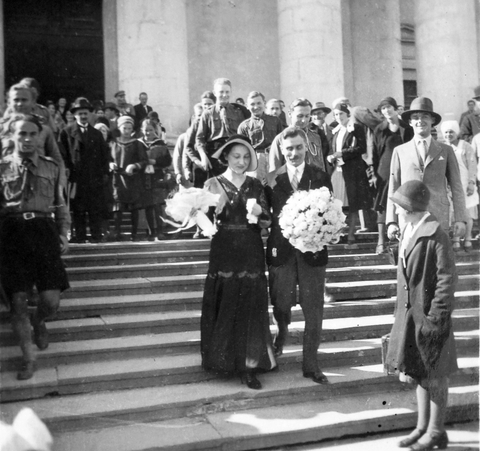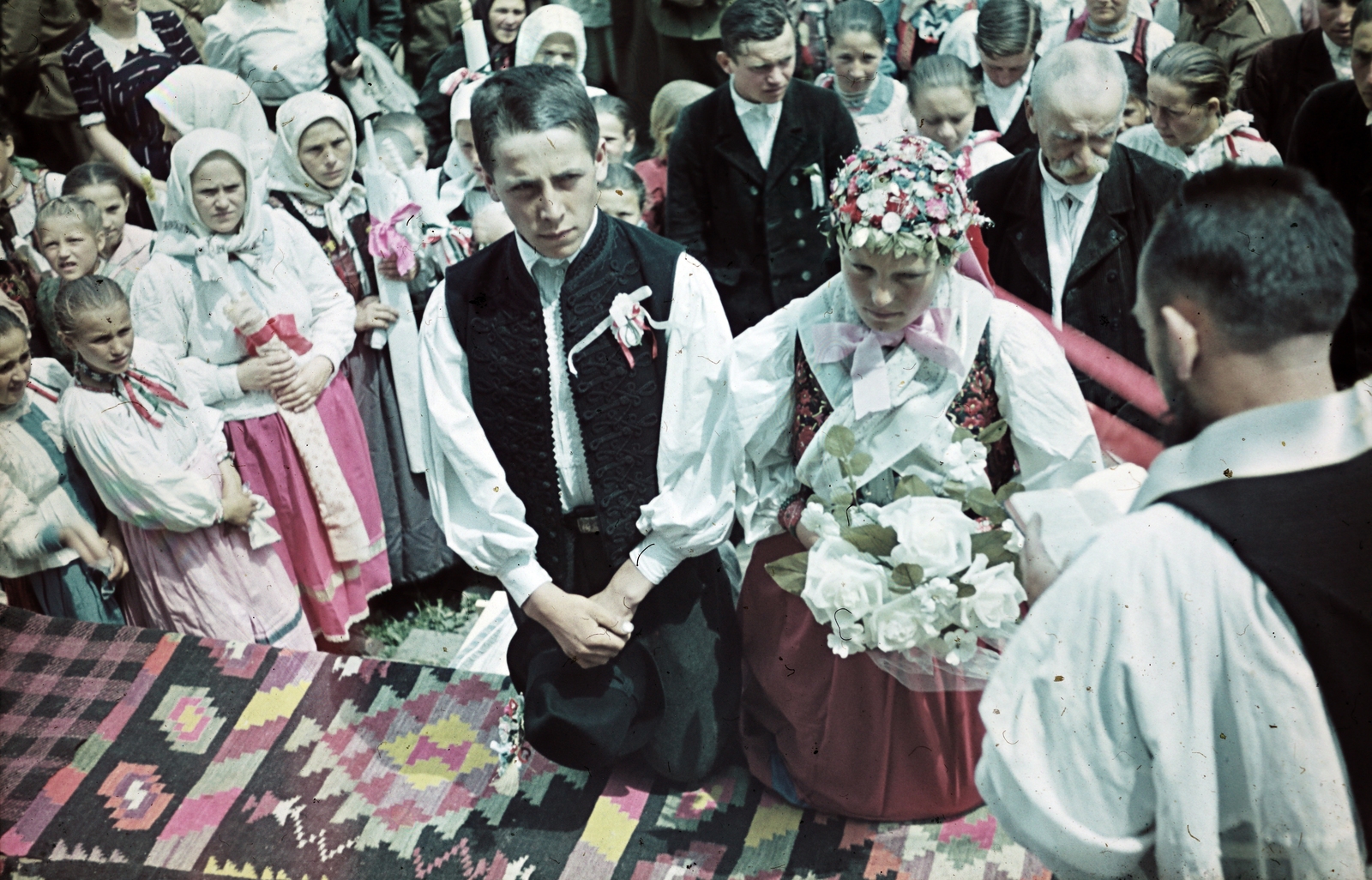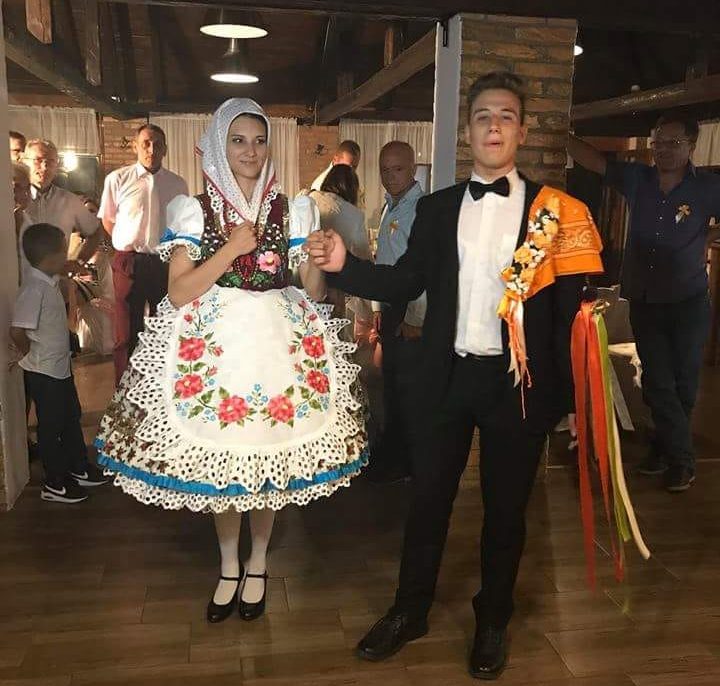
The model got married to Hollywood actor Dylan Sprouse on her family's estate in Ceglédbercel.Continue reading

Barbara Palvin is one of the most sought-after models of our time, so it is no surprise that the world press has given her wedding in Hungary a lot of attention. Even more so that a hefty Vogue article featuring the model’s outfits included the phrase “menyecske ruha,” in Hungarian, as there is no English equivalent, reports Magyar Nemzet.
The three major turning points in human life – birth, marriage, and death – are linked to a number of peasant customs that, though worn out or significantly altered, are still alive today. Many of the old Hungarian wedding traditions are still practiced today, and the folk customs remain the origins of modern weddings, as well as community ties that strengthen the sense of belonging.
It seems that Barbara Palvin, a Hungarian model who has achieved much national and international success, thought no differently, insisting that she and her American actor, partner Dylan Sprouse, say their vows in Hungary, at her parents’ estate in Ceglédbercel, near Budapest.
The couple from Long Beach, California, were thus able to enjoy a traditional Hungarian wedding on July 15, and the red dress designed by Hungarian designer Péter Merő made the world press in no time.
The 29-year-old model spoke about the tradition of the costume in an interview with Vogue magazine, adding that it was no question that she would choose a red, swirling skirt.
However, the dress that new wives wear was not always red, just as the wedding dress was not always white. The latter, for example, was still typically colored or even black at the turn of the century, with white wedding dresses only coming into fashion in the 1920s. In Mezőkövesd (northern Hungary), brides were married in black dresses in 1910, and in Martovce (Martos, now Slovakia) the wedding dress was usually made of black silk.

A wedding in 1935 in Eger, northern Hungary. Photo via Fortepan.
For a long time, no special wedding dress was made: the girl to be married was dressed in the most beautiful and fashionable dress (the decoration was a sign of the family’s financial status), the colors of which were determined by local costume traditions. In less traditional places, however, a dress was also made for the occasion.
The ceremonial dance on the night of the wedding, after midnight, is called the bride’s dance.
The older women symbolically made the bride into a woman by putting her hair in a bun and welcoming her into their community. As for the color of the bride’s dress, there were instances where a light-colored dress was worn to offset the black of the bridal attire, but later red and white became the color of the dress, i.e. a red or claret dress surrounded by a white apron.

Traditional Hungarian wedding from 1940. Photo via Fortepan
The marriage ceremony was also an initiation ceremony, during which the boy became a man and the girl a woman. The wedding night also had legal significance, as it was the basis for the validity of the marriage.
The time of the wedding ceremony varied from region to region: in some cases it took place after the bride’s dance, in others before it.
Nowadays, the new wife’s dance is opened by the best man (or the master of ceremonies for modern weddings), who invites the guests to dance by shouting “The new wife is for sale!” or “The bride is for sale!”. Many people still believe that after the dancing, the bride is thrown change, has to sweep it up and collect it in a bucket held by the newlywed husband, symbolizing their roles in the marriage. In modern, mostly urban bride and groom dances, the master of ceremonies walks around with the bucket or box in his hand, into which the guests throw money.

The master of the ceremony opens the new wife’s dance. Photo via Facebook/Kulcsár Tamás Vőfély
Today, the new wife’s dress (menyecske ruha) is usually a playful dress in which the bride can dance a lot and comfortably. In terms of material and cut, almost anything is possible, although the color red and its shades continue to dominate bridal trends. In terms of the continuation and re-creation of Hungarian folk traditions, it is encouraging and forward-looking that many designers are taking inspiration from folk costumes, using traditional elements and motifs.

The model got married to Hollywood actor Dylan Sprouse on her family's estate in Ceglédbercel.Continue reading
Via Magyar Nemzet, Featured image via Instagram/Barbara Palvin
Array
(
[1536x1536] => Array
(
[width] => 1536
[height] => 1536
[crop] =>
)
[2048x2048] => Array
(
[width] => 2048
[height] => 2048
[crop] =>
)
)